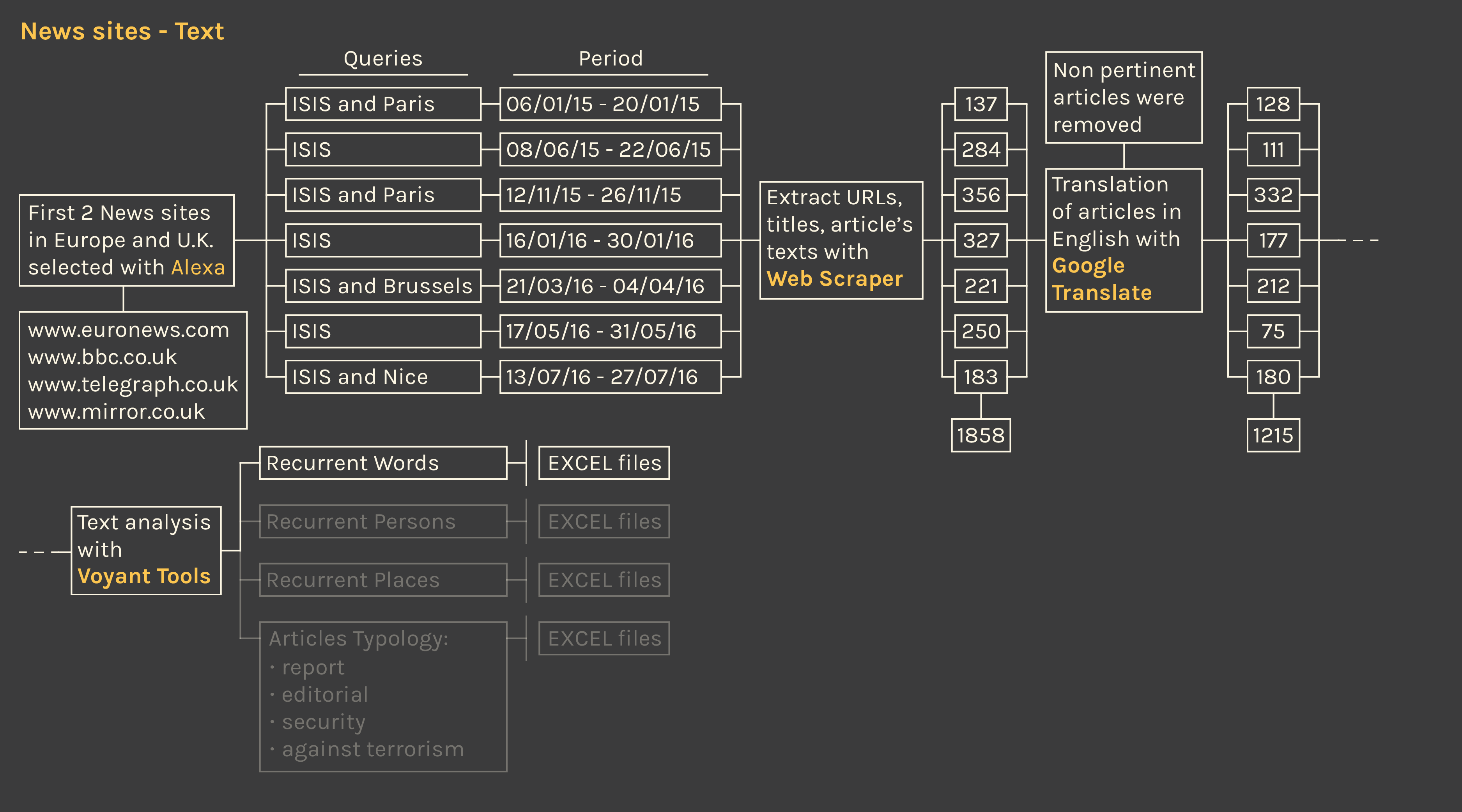Protocol

Through the use of the Alexa ranking, four European news sites were selected to be used for the collection of data relating to the articles concerning ISIS. Two of the four news sites (Euronews and BBC Online) were selected as first two European news sites in the ranking of the most used, the other two (The Telegraph and Mirror Online) from the ranking of the UK. This method of selection considered news sites that use the English language for their publications, but we discovered that this wasn’t the case after all (read below).
The data collection was first conducted on Google to collect the articles. Each search query used the word "ISIS," combined with the name of a city (Paris, Brussels and Nice) in the periods in which terrorist attacks in Europe have occurred.
The 7 periods examined were selected referring to the results of Google Trends as shown in the introduction of this website. Respectively to the peaks represented by the attacks were selected 3 interim periods, defined truce time intervals. For each event or research period it was defined a time range of two weeks for the collection of the articles. The same search query matched to the reference period was repeated four times, once for each news site; for a total of 28 searches.
Example: ISIS AND Paris site: euronews.com - Costum range: Nov 6, 2015 - Nov 20, 2015
The results of each research were collected with the Google Chrome extension Web Scraper that allows to collect specific items of the page through the html code reading. In this case, URLs, articles section, title and text were collected. The result was a .csv file for each search, containing the results of the scraping. The total number of articles collected (1758) was then manually reduced according to the relevance for this research; the final number of used articles is 1215. Most of the articles were written in foreign languages, for this reason the articles were translated into English using Google Translate.
All the generated datasets were combined into different files for analysis. The text of the articles was analyzed to bring out the occurrences, with Voyant tool. With the use of the tool, the three most frequent words were selected for each article. In a second iteration of the process, for each one of the 7 time periods, the 15 most frequent words were selected and finally compared.


